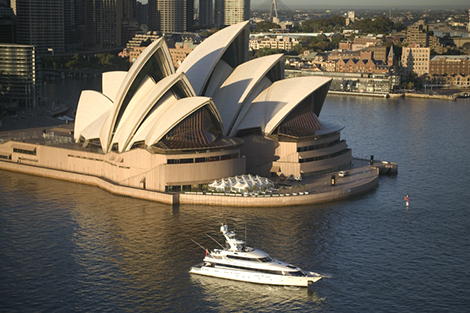Australia's Navigation Act brought into 21st Century
The Navigation Act 1912 has been rewritten into the Navigation Act 2012 in order to better the conditions and the running of vessels in Australian waters.…
Effective from 1 July 2013, the act was rewritten in order to take into account practices that are no long necessary and to regulate more contemporary operations. Rather than changing and requirements or obligations, the Act has been changed structurally to make certain issues clearer. Some of the changes proposed are still in draft stages with the Australian Maritime Safety Authority (AMSA) and awaiting industry feedback before they are made legislation.
The Navigation Act applies primarily to Australian flagged vessels, which are on, or intended for use on, voyages outside Australia’s exclusive economic zone (EEZ), and to all foreign flagged vessels in Australian waters. The National Law Act for Domestic Commercial Vessels, which also come in to force on the same day, establishes requirements for Australian commercial vessels that operate domestically.
The Act change will apply to Australian flagged vessels that go outside Australian waters, or commercially outside Australian waters; foreign flagged vessels operating commercially in Australian Waters; and Australian vessels that maintain certification for unrestricted operations.
The AMSA will be the regulator of the act, rather than the individual states, so vessels can operate in Australian waters without seeking permission for each individual voyage. Speaking to Cameron Bray, director of Bray Management, the benefits of a single national regulator “allows yachts to operate freely anywhere within Australian waters … [the Navigation Act] is not voyage based and vessels will no longer move between legislation depending on what type of voyage they are undertaking. The previous system of voyage-based determinations for vessels travelling interstate or overseas on an ad hoc basis added to the costs of compliance for industry, and regulation for government. Foreign flagged vessels, certified by class and the LY2 code, will be permitted to operate under the same terms as regulated Australian vessels.”
For superyachts, this clarifying of the regulations also means the definition of the type of vessel a yacht is has been defined. “In both the new and old Navigation Acts, the first question needing to be answered is whether or not the vessel is a commercial vessel”, said Mary Anne Edwards, chief executive of AIMEX & Superyacht Australia. “Under the new Navigation Act 2012 the definition has changed which means that most superyachts will not be defined as recreation vessels as they do not meet the criteria of ‘not for use in connection with a commercial, governmental or research activity’.
Therefore, under this definition, most will be covered by the Navigation Act 2012.
“It can be expected that most superyachts will either be foreign flagged vessels or regulated Australian vessels covered by the Navigation Act 1912 at all times. In this case they cannot be covered by the National Law and this will provide a consistent regulatory regime for superyachts.”
Another beneficiary of the rewrite, as Edwards pointed out, is the crew on board superyachts: “New qualifications under Marine Orders Part 3 will enable Australians to obtain STCW95 Certificates of Competency that equal current MCA Certificates, but without the restriction to Yachts only. Additionally, the requirements of recognition of sea service aboard superyachts have been substantially revised and are now accepted in most cases for time served aboard commercial superyachts.
“Crew on Australian superyachts will be required to hold qualifications appropriate for the voyages that the vessel will undertake. AMSA is working with industry representatives to ensure that there are suitable mechanisms in place to allow superyacht crew to gain the necessary qualifications, both through recognition of training provided or verified by Yachting Australia and through broader acceptance of sea time served on yachts. This work is on going.”
Long term, the changes in the Navigation Act 2012,as they stand for superyachts, is to provide superyacht with a ‘clearer identity’, as Bray commented, as previously regulations were unclear for them.
Related links
AIMEX
Bray Management
NEW: Sign up for SuperyachtNewsweek!
Get the latest weekly news, in-depth reports, intelligence, and strategic insights, delivered directly from The Superyacht Group's editors and market analysts.
Stay at the forefront of the superyacht industry with SuperyachtNewsweek
Click here to become part of The Superyacht Group community, and join us in our mission to make this industry accessible to all, and prosperous for the long-term. We are offering access to the superyacht industry’s most comprehensive and longstanding archive of business-critical information, as well as a comprehensive, real-time superyacht fleet database, for just £10 per month, because we are One Industry with One Mission. Sign up here.
NEW: Sign up for
SuperyachtNewsweek!
Get the latest weekly news, in-depth reports, intelligence, and strategic insights, delivered directly from The Superyacht Group's editors and market analysts.
Stay at the forefront of the superyacht industry with SuperyachtNewsweek




